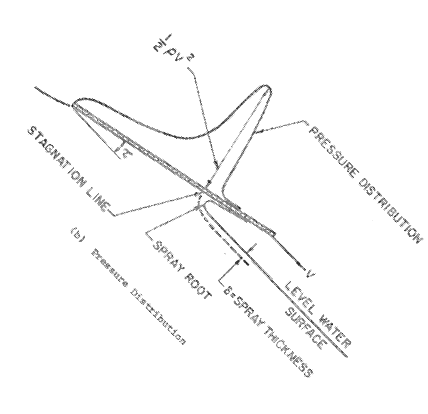There's something
that never seems to make into discussions about fin design and maybe
for good reasons. I know I've struggled with it for a long time.
Something changes
Consider, in waist
to chest high water, let a wave pass over you. Is the flow the same
on the leading face as it is on the back of the wave-form? No? How
about half way through? No? So, somewhere between the leading face
and the back of the wave-form something changed.
Penetration matters
It's not
unreasonable to assume that flow of water in a wave-form will vary
with penetration into the wave-form. (When you really think about it,
how could it not.) In particular, that the water particles moving on
the face of the wave are moving differently that those immediately
adjacent to them as you penetrate into the wave. That is, if you
stuck a series of devices that measured both the magnitude and
direction of flow along the penetration length of the fin, these quantities are likely to
change as you move along the length of the fin. It's also not
unreasonable that the magnitude of the upward component of the flow
along the fin would decrease as you penetrate deeper into the wave.
If so, then surely this would have implications with respect to fin
design. (You'll also have to factor into the consideration the flow that is being diverted by the bottom of the surfboard. And the depth of influence of this flow is likely to be a function of the wetted surface area of the board, as well as the wave-side rail geometry.)
Forces develop on
the fin from the various flows it experiences. But if the flow is
different with penetration into the wave face, than the fin itself
will experience different flows along its penetration length, and
hence different forces will be generated. That is, different forces
would be generated from those if you assumed the fin was experiencing
the same flow over the whole length of penetration.
So regardless how
you've decided or believe how a fin is operating, how it functions is
surely flow dependent, and therefore one might expect there would be
some need to account for the differences in flows with respect to
penetration (assuming the changes in the flow field are sufficiently
significant). For example, holding base length and rake constant,
then maybe whatever the impact that one might count on for a given
surface area has to be adjusted simply because the flow is changing with penetration depth.
But its not just the
magnitude of the flow that would be changing.
There's also the
consideration that once you start moving transversely across the face
of the wave, the flow takes on that transverse component -i.e. it
will be a function of both the upward flow and transverse flow (at
least). So the direction of the flow, when moving transversely also
stands to change with depth.
… fun, and
exciting, but maybe it's delusion..
Modeling fins after
dolphins, aircraft wings, etc. is very romantic and, I guess kind of
exciting. It allows the designer to attribute all sorts of properties to the fin. But maybe it's delusion.
Maybe the flow dynamics on a wave are sufficiently different to
warrant their own approach. (Dolphins can be seen playing in waves,
but its very unlikely their brief time spent in heavily shoaling or
braking waves would have had much of an impact on their evolution.
And I'm fairly confident that the same is true for just about any
other aquatic or semi-aquatic creature.)
Surfboard fins
themselves have had a kind of Darwinian evolution however, and it quite
likely that many of the more popular fin styles, in many ways already take this
differential flow profile into account. Or perhaps it's been
discovered by the somewhat random trial and error that,
the difference in flow as you penetrate into the wave may not be
enough to have much of an impact.
If you survey the
more popular surfboard fin designs, it's apparent that they have a
lot in common. So, for example, at least over the ranges of
penetration depth that you encounter today on say on the more popular shortboard fins,
perhaps whatever influence this differential flow might have has been
accounted for in their design (as best they could be.)











